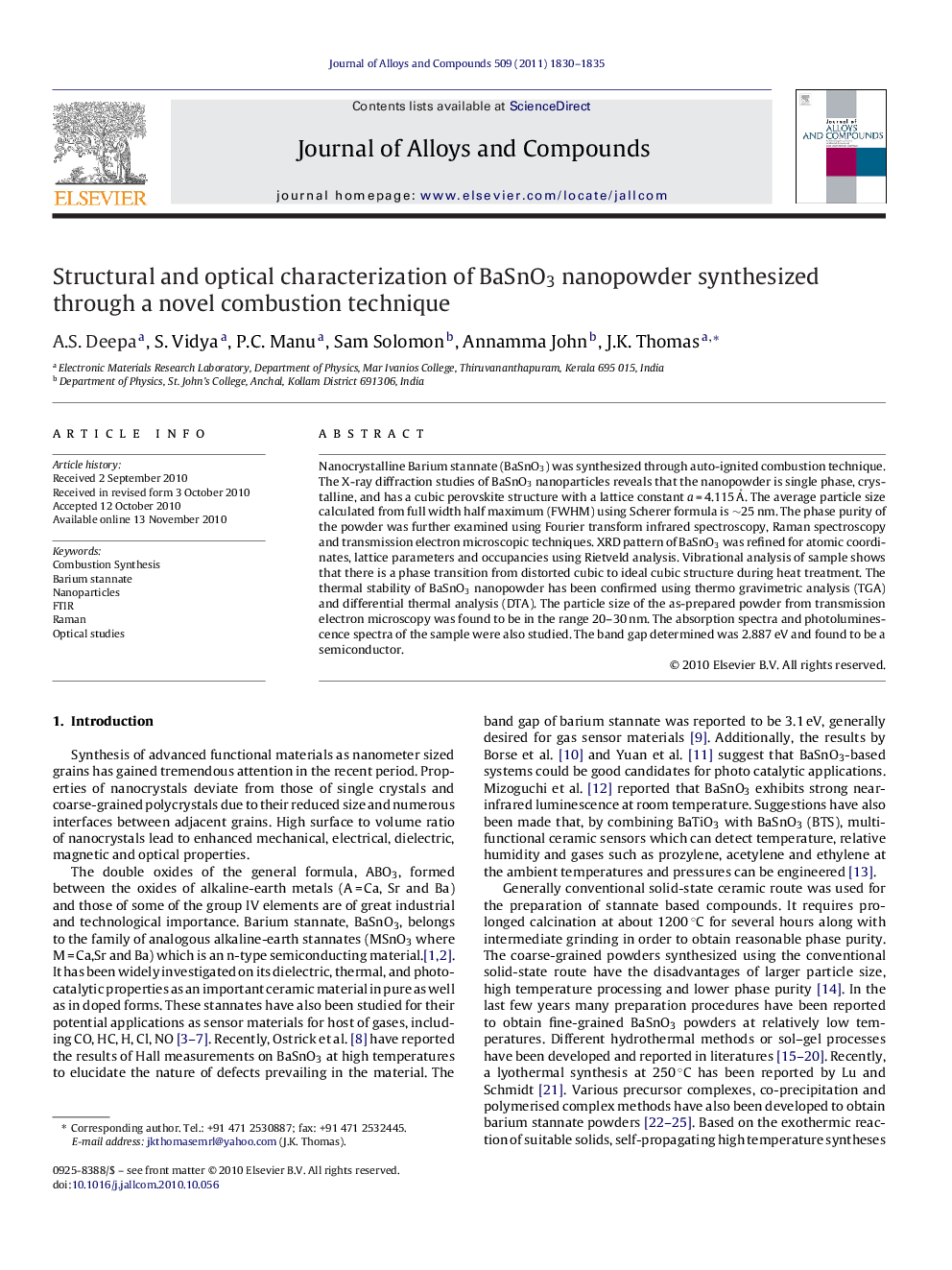| Article ID | Journal | Published Year | Pages | File Type |
|---|---|---|---|---|
| 1618365 | Journal of Alloys and Compounds | 2011 | 6 Pages |
Nanocrystalline Barium stannate (BaSnO3) was synthesized through auto-ignited combustion technique. The X-ray diffraction studies of BaSnO3 nanoparticles reveals that the nanopowder is single phase, crystalline, and has a cubic perovskite structure with a lattice constant a = 4.115 Å. The average particle size calculated from full width half maximum (FWHM) using Scherer formula is ∼25 nm. The phase purity of the powder was further examined using Fourier transform infrared spectroscopy, Raman spectroscopy and transmission electron microscopic techniques. XRD pattern of BaSnO3 was refined for atomic coordinates, lattice parameters and occupancies using Rietveld analysis. Vibrational analysis of sample shows that there is a phase transition from distorted cubic to ideal cubic structure during heat treatment. The thermal stability of BaSnO3 nanopowder has been confirmed using thermo gravimetric analysis (TGA) and differential thermal analysis (DTA). The particle size of the as-prepared powder from transmission electron microscopy was found to be in the range 20–30 nm. The absorption spectra and photoluminescence spectra of the sample were also studied. The band gap determined was 2.887 eV and found to be a semiconductor.
Research highlights▶ Synthesis of BaSnO3 nanoparticles through a novel auto igniting single step combustion process. ▶ Phase purity was confirmed with XRD and Rietveld analysis. The structure is found to be cubic. ▶ Thermal stability of BaSnO3 nanopowder was investigated using DTA/TGA curve analysis. ▶ Structural analysis was done using FTIR and Raman studies and different vibrational modes were assigned. From the vibrational studies it was found that on heat treatment there was a transition from distorted cubic to ideal cubic structure. ▶ Band gap energy was calculated using UV–vis absorption spectra and found that sample shows maximum UV absorption. ▶ Photo luminescent studies were carried out and transition corresponding to each emission line was given.
